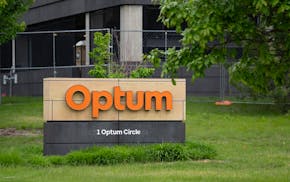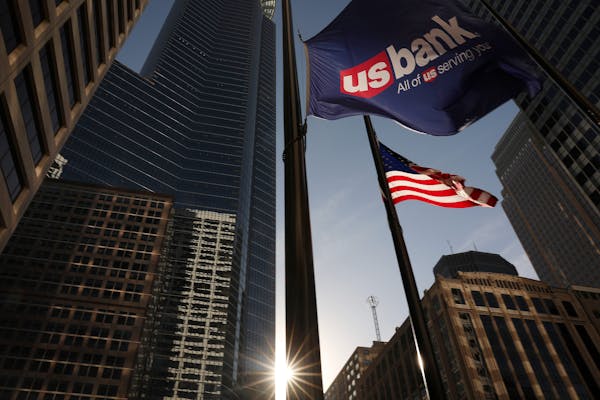Time — and money — is running out for the owners of many Twin Cities office buildings as they scramble to fill cubicles, pay their bills and decide what's next for their properties.
From sleek downtown towers to sprawling suburban complexes, building values are falling, borrowing costs are increasing and willing lenders are dwindling. Selling isn't a good option either, as office sales have hit the skids while buyers wait for prices to reach their floor.
Though office workers are steadily returning to their desks, there's growing unease across the metro about what will happen when billions of dollars in office building loans come due in the next couple years. In the Twin Cities, that's forcing many owners to buy time with loan extensions and modifications aimed at riding out the worst of today's commercial credit crunch.
"This whole thing is uncomfortable and really painful," said Don Kohlenberger, president of Hightower Initiatives, which often helps building owners navigate such challenges. "Coming out the other side of this, I feel, is going to be hard medicine."
'Gloomier than reality'
Unlike homebuyers who typically purchase with 30-year mortgages, short-term loans —typically five years or fewer — finance most office buildings, and many have floating rates.
Manus Clancy, senior managing director with Trepp, a New York-based research firm that tracks commercial real estate loan data, said the delinquency rate is still relatively low, especially in the Twin Cities. But there's considerable anxiety about what's to come as leases expire, mortgages come due and financing options become scarce.
"In some ways, the outlook is gloomier than the reality at this point," Clancy said. "When you're in that mode and have no confidence in what the office market will look like in two to three years, you fear the worst."
Office defaults peaked during the Great Recession, especially during 2012 and 2013 when the national rate exceeded 10% for at least 15 months, according to Trepp, which tracks the amount of loan debt that's in default rather than the number of buildings in trouble.
The office delinquency rate in the Twin Cities metro has hovered at about 4.5% for most of the year, according to Trepp, but fell to about half the national average of 5.75% in recent months.
The delinquency rate can fall, Clancy said, when buildings go into foreclosure and come off the default list but also when building owners renegotiate or refinance their troubled loans.
This month, the special servicer that's handling the loans on the IDS Center in downtown Minneapolis said after missing a key balloon payment this year, the owners have reached a tentative loan modification agreement that should finalize at the end of the month.
Accesso, the Florida-based company that owns IDS, wouldn't comment on the building's financial situation but said in a statement 16 new lease transactions for more than 121,670 square feet have been completed this year.
Clancy said while such deals can fall apart at the last minute, such an agreement often means the borrower has done something to restore faith in its ability to make payments.
"It's s a vote of confidence and a sign that they believe in the asset," he said.
Like the value of most downtown buildings, the tower's value has fallen dramatically since the start of the pandemic. The value for tax purposes peaked at $319 million in 2020. This year, the building comes in at $257 million, only slightly more than Accesso paid a decade ago.
History repeating
For many commercial investors, volatility — and risk — is nothing new.
At Fifth Street Towers, a pair of high-rise office towers just a few blocks from IDS, history seems to be repeating.
Built in the mid-1980s, the towers sold for $186 million on the eve of the Great Recession. As the economy sputtered, the two towers were only 64% occupied, fell into foreclosure and were sold at auction for $111 million in 2012.
Three years and a $2 million upgrade later, the buildings sold again for $154 million. By last year, however, occupancy declined, and the value of the 25- and 36-story buildings fell by more than half. To avoid foreclosure earlier this year, the owners agreed to a one-year extension, according to recent SEC filings.
Such a reprieve was not in the cards for a nearby office building of more than 200,000 square feet. This month, 330 South Second went up for auction with a starting bid of $3 million just five years after a Boston investment firm paid $20 million for the building. Today, its value is at about $15 million.
There are signs of financial stress across the metro, especially in the southern suburbs, where several large corporations have recently downsized. Thomson Reuters, for example, vacated its sprawling campus in Eagan and moved into a portion of another building built for a different company.
At the largest office complex in the metro, Normandale Lake Office Park, the occupancy rate remains solid, said Dan Gleason of Cushman & Wakefield. He said the building has an occupancy rate in the mid-80s percentile and is outperforming others.
Still, the owner of the company hasn't fully paid nearly $10 million in property taxes this year, including nearly $850,000 in penalties. Last summer, New York-based Opal Holdings paid $366 million for the 1.7 million-square-foot complex, which traded eight years earlier for nearly $370 million.
Opal didn't respond to requests for comment, but the company's loans appear to be current, according to Trepp.
Tom O'Brien, executive director of the Cushman & Wakefield office in Minneapolis, said at the time of the mid-pandemic sale, it was an attractive asset that traded without ever hitting the market.
"The property is well positioned to benefit from the market conditions," he said. "There's an energy and enthusiasm at that project that will allow it to win at the end of the day."
Reason for optimism
Despite so much uncertainty, it's not all doom and gloom, Gleason and other brokers said. Offices with prime amenities in desirable locations still lease well — albeit most new leases are smaller than previous ones — and many owners are on solid financial footing.
Several metro-area submarkets have vacancy rates in the single-digits, but across the metro, office vacancies are at record highs. Those most vulnerable to default are those with low occupancy and loans that exceed the current value of their property, Gleason said.
Those who need to refinance today will do so at much higher rates than previously. But with loans coming due, experts said it'll take years for the office sector to correct, and troubles will likely worsen before they improve.
Owners not willing to give up their equity are instead trying to buy time by extending their loans with the expectation — and hope — they can increase cash flow, refinance their buildings or find a buyer.
Josh Krsnak, a Twin Cities-based real estate investor and developer, said that during the Great Recession, he learned the hard way what happens when banks tighten the purse strings and values fall. So early during the pandemic, he proactively refinanced his office holdings.
"We don't have any of these challenges right now," he said. "Because I had to live through this in '08."
Instead, Krsnak is in buying mode. He recently bought LaSalle Plaza in downtown Minneapolis for pennies on the dollar. Since then, he's made offers on eight metro-area office buildings but has closed on only one, the Pence Building in downtown Minneapolis.
"Not every one of them was lender-owned or a distress sale," he said. "But every one of them was selling for less than its 2019 value and for less than the current owner paid."

Delta hiked fares for solo travelers, until Twin Cities travel experts caught the change

In first speech back, UnitedHealth's new CEO pledges to review hot-button issues

A child had measles at Mall of America, concerning state health officials who don't know source

Ramstad: Gov. Walz, things are not getting done in Minnesota




